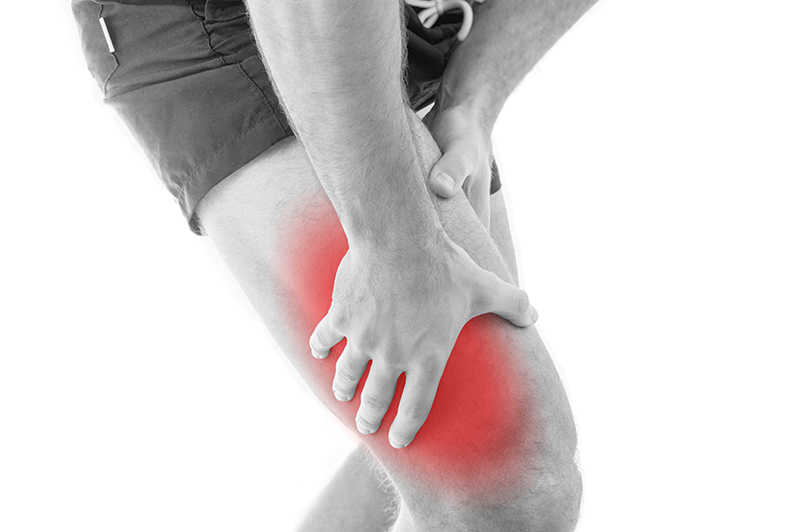
Quadriceps Contusion
Quadriceps contusion (aka “corky” or “cork thigh”) is an extremely common injury caused by a direct trauma to the anterior thigh.
Additional Information
Home Treatments
- Players should remove themselves from play after suffering a quadriceps contusion, especially if weight-bearing is associated with pain
- Acute management involves compression, ice, rest and elevation
- Crutches may be necessary if weight-bearing is difficult or painful
- Massage should especially be avoided in Stage one (haemorrhage control stage)
- Gentle active stretching to the point of pain is permitted
- Stage two- restoring pain-free range of motion: involves introduction of some gentle soft tissue therapy / massage away from the site of injury. Passive stretches can be introduced as well as exercises (stationary bike, swimming, static muscle contractions, strengthening through range)
- Stage three – functional rehabilitation stage: Involves further soft tissue therapy as well as progressive increases in strengthening. Higher impact exercises are involved, including running and jumping. Stretching must be maintained.
- Stage four – return to play: This involves more vigorous myofascial release techniques, often with the quadriceps muscle on stretch. Sport-specific exercises are introduced and a full training session is advised before return to play.
Professional Medical Treatments
- NSAIDs (or Nonsteroidal Anti-Inflammatory Drugs) can often help reduce swelling and back pain. Consult GP to ensure appropriate use.
- Physiotherapy myofascial release as discussed above will aid in facilitation of muscle length and lymphatic drainage
- Protective padding may be advised for return to play
Physical Therapy Exercises
- Strengthening exercises that address lumbopelvic stability, improve lower limb mechanics and strength as well as increasing flexibility are important to rehabilitate. Strengthening should be through a progressive offloading and then reloading rehabilitation program which should be guided by your physiotherapist. The offloading period combined with the protected reloading period as well as the return to sport period will usually take approximately 3 – 4 months.
- Poor endurance of the lumbar extensor muscles has been linked to development of lumbar bone stress injuries
- Complications may arise such as compartment syndrome of the thigh or myositis ossificans (that is, calcification of the haematoma resulting in bone tissue deposits within the muscle).
Prevention
- Protective padding is the main way of limiting the possibility of a quadriceps contusion
- Discontinuing activity after suffering a contusion will prevent worsening of the contusion